Segovia sits in the high plains of central Spain like it’s been waiting. The kind of place where the buildings still do what they were built to do—hold weight, frame quiet, cast long shadows in the afternoon. No one polished the stone to please visitors. It’s just there, worn smooth where hands and feet and weather have worked on it for centuries.
You arrive, and it looks straightforward: a Roman aqueduct, a castle that seems one gust of wind away from flight, a handful of churches, old houses, steep streets. But move a little slower, and details start to emerge. A window shutter with chipped paint. A butcher sweeping out his doorway. Locals ducking into a bar at noon for wine and something fried. Segovia isn’t performing. It’s just existing, and you’re lucky to pass through.
This guide isn’t about big reveals. It’s for travelers who notice small things. Who like their cities with a bit of edge, a lot of history, and no need to explain themselves. If you’re wondering what to do in Segovia, start by showing up curious—and take it from there.
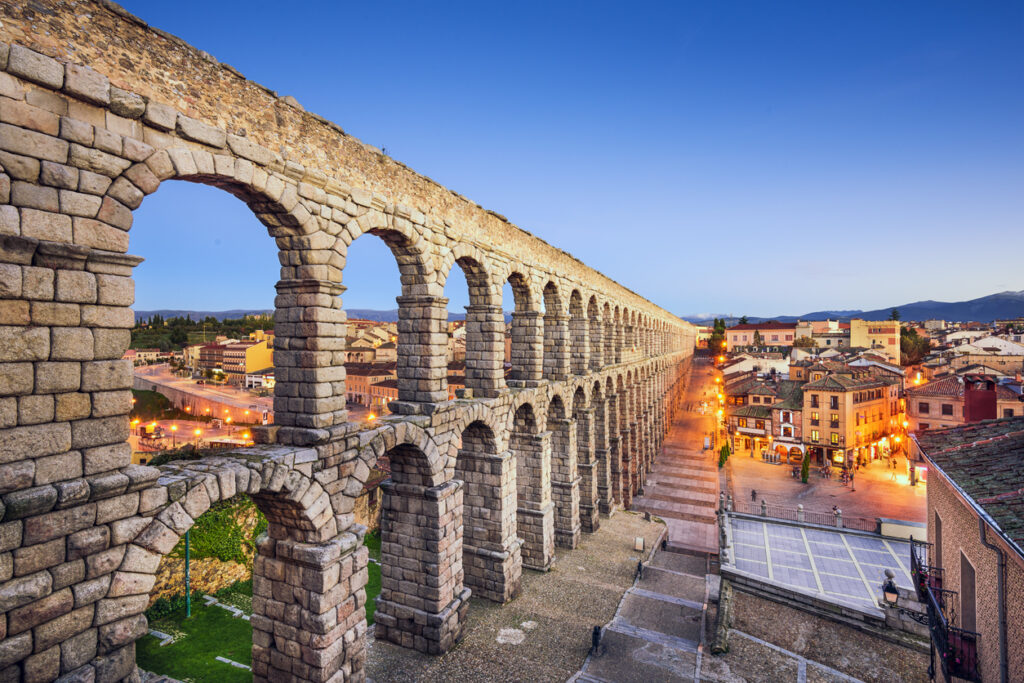
*Note some of the links feature affiliate links. I only recommend items that I 100% love and think you will too!
Top Sights to See in Segovia
Segovia doesn’t overload you with options. That’s a good thing. What it offers is tight, concentrated, and rooted in place. Every major sight is within walking distance, but each one hits differently. These aren’t just landmarks—they’re anchors. Bits of the city’s identity, still doing their job long after the world changed around them. You’re not just here to look. You’re here to stand still for a second and let the weight of these places hit you in the chest.
Aqueduct of Segovia
Still standing after 2,000 years. Built without mortar. That sentence should be enough—but seeing it is something else. Granite arches stretch across the city like they belong there. No markers, no fences. Just stone and sky.
- Walk to the base at Plaza del Azoguejo and look straight up. That’s not awe. That’s architectural intimidation.
- Climb the stairs at the side for a view from above—watch the aqueduct slice across rooftops like a stone river.
- Go at night. The lighting isn’t dramatic. It’s steady, respectful. The kind of glow that suggests the Romans would’ve approved.
Alcázar of Segovia
Some castles feel ornamental. This one doesn’t. The Alcázar is built like a warning—perched on a cliff, all turrets and sharp edges, with a moat for good measure. It looks fictional, but everything about it is practical. Defensive. Serious.
- Tour the halls: painted ceilings, coats of arms, rooms that feel more like scenes.
- Climb the tower. It’s narrow, hot, and the stairs are brutal. But at the top, you see the entire plateau laid out like a chessboard.
- Walk the outer perimeter where the rivers meet the rock. It’s quiet, almost harsh. No gift shops out there. Just wind and stone.
Segovia Cathedral
Sits right in the heart of the city, but never feels crowded. It’s massive but measured. Not ostentatious—just complete. Late Gothic, all pale stone and steady light.
- Step inside and let your eyes adjust. The cool interior and soft golds of the chapels slow everything down.
- Climb the tower if you can—Segovia is full of viewpoints, but this one feels earned.
- Look for the mismatched details. A bit of Renaissance here, some Baroque there. This isn’t perfection—it’s layers.
Jewish Quarter + Casa de los Picos
A few steps off the main drag, and Segovia shifts. The stones get darker. The streets narrower. The Jewish Quarter doesn’t announce itself, but if you follow the turns, it becomes clear: this part of the city has stories no one ever fully told.
- Casa de los Picos is the landmark: spiked stone façade, part fortress, part statement.
- Inside, it’s a rotating exhibition space—usually local artists or historical fragments.
- The real pull is the walk itself. The street plan is old, irregular. It feels like the city is asking you to get a little lost.
Mirador de la Pradera
The best view of the Alcázar isn’t from inside it. It’s from down below, in a small park just west of the castle. No plaques. No fanfare. Just a bench, some grass, and the most absurdly photogenic skyline you’ll ever see.
- Bring a snack, a book, or someone you want to impress.
- Early evening is best—the light catches the towers and makes the castle look like it’s floating.
- Locals come here to think. You’ll understand why.
Toledo + Segovia in One Bold Day
Two cities. One ticket. You’ll weave through Toledo’s medieval streets, dip into the cathedral if you’re game, then head to Segovia to size up the Alcázar—Spain’s real-life castle flex.
Grab your spot—this one hits hard and delivers.
Planning to Start in Madrid? This Free Email Course Has You Covered
If you’re heading to Segovia, there’s a good chance you’re starting in Madrid—and honestly, how you begin the trip sets the tone for everything else. That’s why I built a free email course for travelers who want to hit the ground ready.
Before this course, you’re scrolling hotel reviews at midnight and Googling “best tapas in Madrid” five minutes before dinner. After this course, you’ll know exactly:
- How to get around the city without wasting time
- Which neighborhoods are worth staying in—and which aren’t
- Where to book your first meal (because it sets the bar)
- The sights you should see (and the few you can skip)
- Which day trips are actually worth leaving town for
- The best tours led by locals—not tourism factories
You’ll walk into Madrid with a plan that still leaves room to wander. And Segovia? That’ll just be the beginning.
👉 Sign up for the free Madrid email course here.
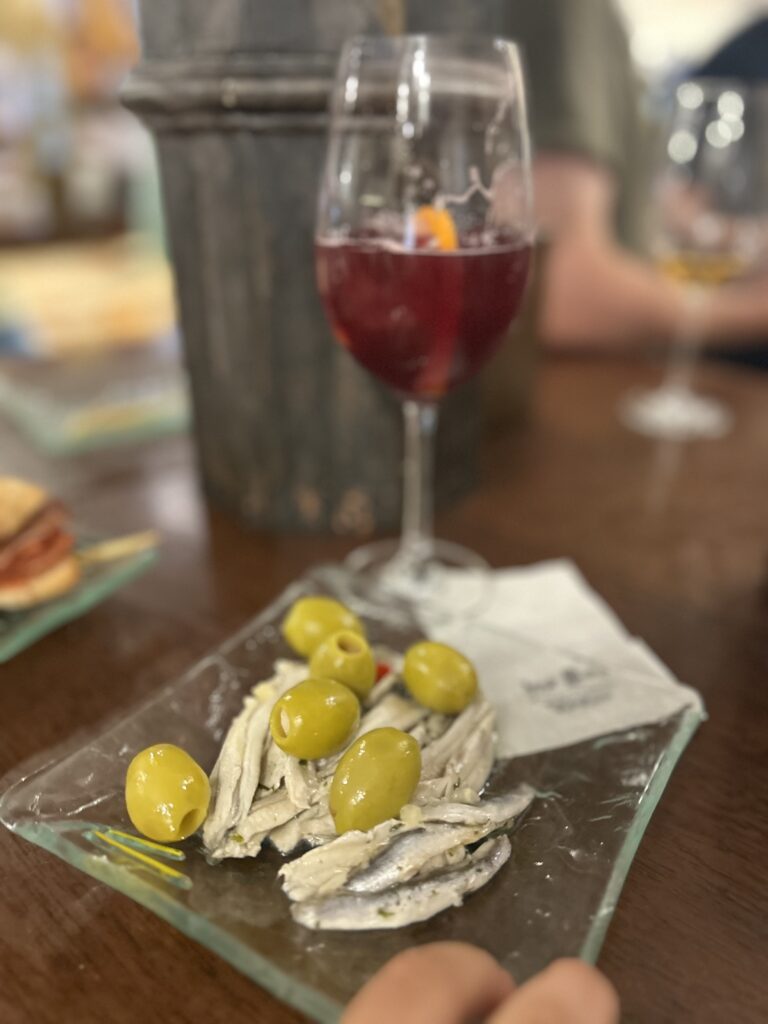
Top Places to Eat in Segovia
You don’t come to Segovia to eat light. You come here to surrender—completely, happily—to the kind of food that was designed for cold winters, long conversations, and zero calorie regret. The menus lean hard into meat, fire, salt, and tradition. Not everything is fancy, but almost everything is deliberate. Recipes haven’t changed in decades because they don’t need to. A good meal here doesn’t announce itself—it just shows up, makes a case, and wins.
Whether you’re chasing the famous suckling pig or want to graze on tapas without a plan, Segovia rewards hunger. Not the influencer brunch kind of hunger. The real kind. The kind that calls for wine at lunch and dessert at noon. Here’s where to go when you want to eat like this city was built to feed you.
Mesón de Cándido
The most iconic restaurant in the city, sitting right beside the aqueduct as if to remind you that food and history are basically the same thing here. Yes, it’s on every list. And yes, it’s still worth it.
- Order the cochinillo. It comes to the table whole, then gets carved with the edge of a ceramic plate—yes, really—because the meat is that tender.
- The dining room feels like a cross between a hunting lodge and a history museum. Old wood, thick walls, zero pretense.
- Come hungry, leave happy, and maybe a little haunted by how good roast pig can be.
El Bernardino
Just far enough off the main square to escape the crowds, but close enough to still feel central. El Bernardino isn’t flashy. It just does everything exactly the way it should be done.
- Go for the cordero lechal—milk-fed lamb, slow-roasted until the edges crackle and the middle collapses under a fork.
- The morcilla (blood sausage) is rich and spicy without being overwhelming. If it’s a special, get it.
- The house wine won’t win awards, but it doesn’t need to. It knows its job.
José María
A bit more polished, a little more modern, and still deeply rooted. This is where locals take visitors when they want to impress without trying too hard.
- Tapas here are thoughtful—mushrooms sautéed with jamón, croquettes that actually taste like something, and house-made pâtés that go heavy on the seasoning.
- Ask for a seat in the courtyard if it’s warm out—it’s shaded, quiet, and ideal for long meals.
- Their wine list is tight. Ask the staff to pair something from Ribera del Duero—they know what they’re doing.
Bar El Sitio
If you want casual and chaotic in the best possible way, this is it. Tucked into the center, usually full, always loud.
- Grab a caña (a small beer) and wait for the free tapa that comes with it. Sometimes a little sandwich. Sometimes pork skewers. Always good.
- Their tortilla de patatas is thick, creamy, and cooked through—none of that runny nonsense.
- This is the spot to feel part of the city. No one’s pretending here.
Taberna López
Smaller, local, slightly under-the-radar. A neighborhood joint that doesn’t care if it gets listed in a guidebook—and is better for it.
- Their lentejas (lentil stew) hits harder than you’d expect. Smoky, dense, perfect for colder days.
- Pork cheeks in red wine sauce when available—do not skip.
- Prices are kind. Portions are not.
Where to Stay
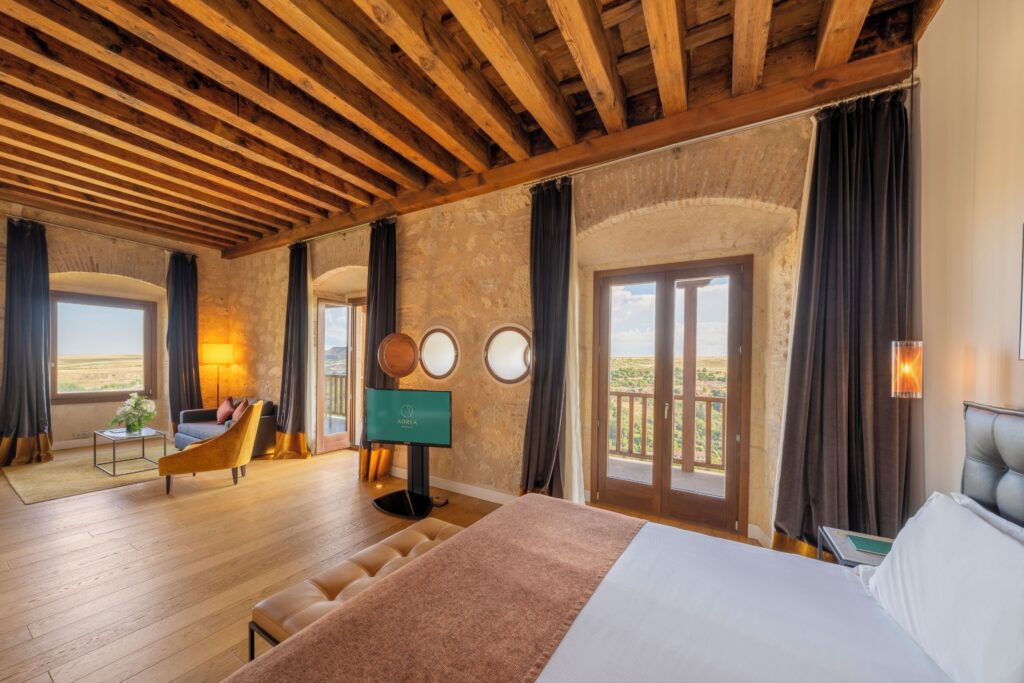
Áurea Convento Capuchinos by Eurostars Hotel Company
This is not just a boutique hotel—it’s a former Capuchin convent, repurposed without losing its soul. Tucked away on a hillside just behind the Cathedral, the building dates back to the 17th century, and you feel it. Arched walkways. Stone staircases. Thick walls that hold onto the quiet. The restoration leans minimalist, but not cold—more contemplative than clinical.
- The rooms vary, but most are large, simply furnished, and filled with soft light. Think natural tones, exposed beams, windows that frame just a slice of the garden or skyline. Nothing is rushed. Everything feels deliberate.
- The original chapel has been preserved and now functions as a kind of communal anchor. Some guests pass through it quickly. Others sit down and stay awhile. It’s that kind of place.
- The spa is housed in what used to be the monastery’s wine cellar. Vaulted stone ceilings, low lighting, and a strange calm you can’t quite explain. There’s a hammam, treatment rooms, and a heated pool that echoes slightly when it’s quiet.
- The restaurant opens onto a terrace with sweeping views over the Eresma valley. Early in the morning, the fog rolls in low and turns the whole landscape silver. It’s not the kind of place you rush breakfast.
- This is the hotel for travelers who want depth. It’s for people who pay attention. Who like their silence thick and their surroundings thoughtful. It’s romantic, yes—but also rooted. If Segovia has a spiritual twin, this might be it.
The Aurea Hotels are quickly becoming one of my favorite – book your stay here.
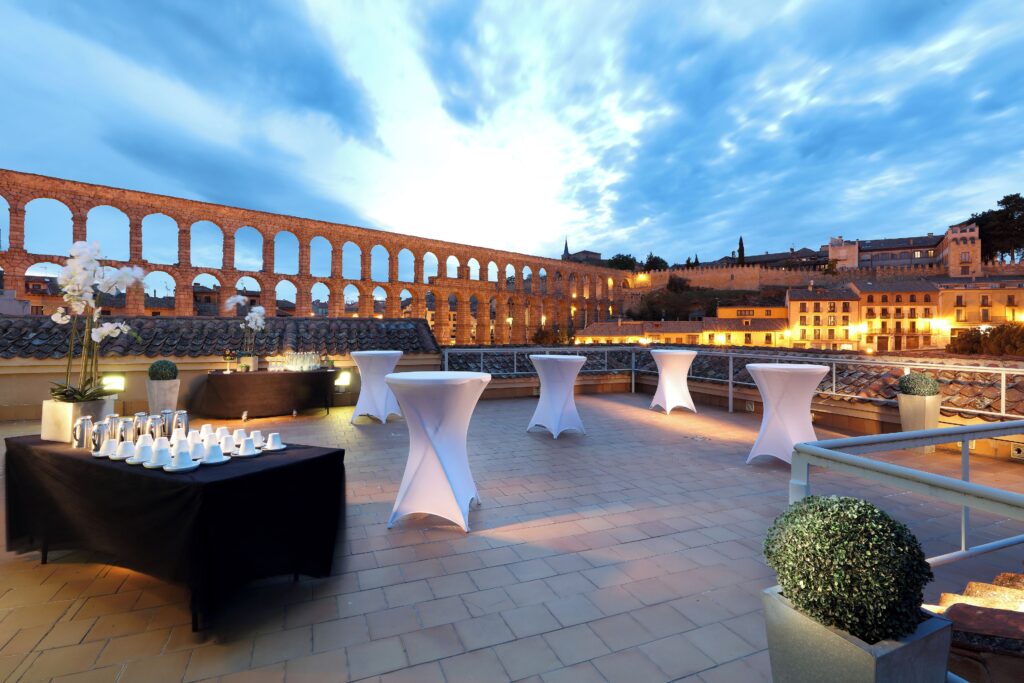
Eurostars Plaza Acueducto
More modern in feel, more central in location, this hotel sits directly across from Segovia’s most famous landmark—the aqueduct. If location is what you’re after, this is your move. You don’t just visit the aqueduct from here—you live next to it.
- From the outside, it blends in with the surrounding architecture. Inside, it’s functional but well-designed: a mix of clean lines, light wood, and large windows.
- Ask for a room with a view. Not every room faces the aqueduct, but the ones that do make you feel like you’re sleeping inside a Roman ruin—in the best possible way.
- Breakfast is served in a glass-walled room facing the arches. It’s simple but well done: ibérico ham, bread that’s actually good, eggs made to order if you ask.
- Great for early risers and walkers—step outside and the city is yours before the crowds show up.
- This is the hotel for travelers who want convenience, clarity, and a direct connection to the city’s most iconic monument. No mystery, no hidden corners. Just a front-row seat.
Book your front row seat to the Segovia Aqueduct here.
Not Sold on These? Browse More Hotels in Segovia
If Áurea Convento Capuchinos feels a little too hushed, and Eurostars Plaza Acueducto sounds too buttoned-up, no problem. Segovia’s got a quiet range of places to stay—old inns tucked behind stone walls, clean modern guesthouses near the aqueduct, the occasional quirky B&B with slanted ceilings and tiled floors that creak a little (in a good way).
Use the map below to explore other hotels in Segovia. Whether you want to stay close to the Cathedral or sleep a little outside the bustle, you’ll find something that fits.
What to Do in Segovia: Real-Life Experiences
Segovia doesn’t need an itinerary. You see the main sights, sure—but it’s the in-between that sticks. A side street that leads nowhere. A church with the door propped open. A glass of wine that turns into two because you’re not in a hurry. If you’re wondering what to do in Segovia beyond the aqueduct and the castle, start here—with the parts that don’t feel like a checklist.
Walk Calle Real Without a Map
This is the street most people end up on without thinking about it. It runs through the center of town and connects everything. Shops, cafes, apartments, old signage—it’s a working street, not a show.
- Check out the small local shops—some are tourist traps, but a few are still run by families and worth stepping into.
- Stop for a coffee if the tables are full of locals. If it’s empty, move on.
- Look around. Not up, not down—just around. This is where daily life is.
Late Afternoon Is Worth Staying Awake For
By evening, the heat dips and the city slows in a different way. It’s not dramatic. But you’ll notice it if you’re walking without looking for anything in particular.
- Grab a bench in Plaza Mayor. Don’t do anything. Just sit.
- Watch people come out again after the midday quiet. There’s a rhythm to it, but it’s not one you need to keep up with.
- If you’re lucky, someone will start tuning a guitar nearby. If not, the silence is enough.
Eat Tapas Like a Local, Not a Blogger
Skip the guides and the “best of” lists. Walk. Stop when something smells good or looks loud enough to be real.
- Order a drink and wait for the free tapa. It won’t be fancy. That’s the point.
- Don’t try to find the perfect bar. Find a few good-enough ones.
- If you feel full, keep walking. If you’re not, order again.
Sit Behind the Alcázar, Not Inside It
The crowds head to the castle. You can skip the line and head around the back. There’s a garden. It’s a little overgrown. A little uneven. Perfect.
- It’s quiet. You’ll hear birds and wind and not much else.
- Sit for ten minutes or an hour. It doesn’t matter.
- This is the part of the castle most people miss.
Step Inside Any Church That’s Open
Segovia has dozens. Most of them aren’t on any map. Some are locked. Some aren’t.
- If the door’s cracked, go in.
- Don’t talk. Don’t take a photo. Just stand there for a bit.
- It’s not about religion. It’s about space.
Frequently Asked Questions About What to Do in Segovia Spain
Is Segovia worth visiting?
Yes, Segovia is worth visiting for its Roman aqueduct, fairytale castle, and well-preserved old town. The city offers rich history, great food, and a walkable layout—without overwhelming crowds.
How much time do I need in Segovia?
You need at least one full day in Segovia to see the main sights like the aqueduct, cathedral, and Alcázar. Two days is ideal if you want to explore more slowly or take a side trip.
What to do in Segovia for a day?
In one day in Segovia, visit the aqueduct, the Alcázar, and the Cathedral. Walk through the Jewish Quarter, enjoy lunch at a local restaurant, and catch sunset from the Mirador de la Pradera.
What’s better, Toledo or Segovia?
Segovia is better for open views and relaxed exploring, while Toledo offers a denser, more intense historic core. Choose Segovia for space and scenery; Toledo for depth and detail.
Why is Segovia so famous?
Segovia is famous for its Roman aqueduct, medieval Alcázar, and iconic cochinillo (roast suckling pig). The city is also known for its Gothic cathedral and compact, walkable charm.
Is Segovia Spain worth visiting?
Yes, Segovia Spain is absolutely worth visiting. It combines major historical landmarks with a calm, small-city feel that makes it easy to explore in a day or two.
What is better to visit, Toledo or Segovia?
Segovia is better for relaxed sightseeing and open views, while Toledo is better for dense history and architecture. Both are worth visiting, but they offer very different experiences.
Is Segovia a walkable city?
Yes, Segovia is a highly walkable city. Most attractions are within 10–15 minutes of each other, and the historic center is built for pedestrians—not cars.
Conclusion: Segovia Spain Is Small, But It Stays With You
Segovia doesn’t sprawl. It doesn’t overwhelm. But somehow, it leaves more behind than places twice its size. You come for the architecture—the aqueduct, the castle—but it’s the space between them that sticks. The way the light settles on stone, the way lunch turns into a long afternoon and the way nothing feels rushed, but nothing feels forgotten either.
If you’ve been wondering what to do in Segovia, the answer is pretty simple: show up. Walk around. Eat well. Let the place open up on its own time. You don’t need a list. You just need to pay attention.
Packing Tips and Travel Tools
Dive into a variety of travel essentials and tips to enhance your next adventure. From safeguarding your phone with innovative waterproof pouches to selecting the most comfortable walking shoes for European streets, each article is designed to address specific travel needs and preferences. Whether you're planning a family trip to Europe, seeking stylish yet practical accessories like the Lululemon belt bag, or aiming to perfect your packing list, these guides will prepare you for a seamless and enjoyable journey.
Stay Cool and Stylish: What to Wear in Madrid in June
Discover the perfect blend of comfort and style with essential wardrobe recommendations for Madrid in June, ensuring you stay cool and fashionable while exploring the city's bustling streets and iconic landmarks.
Vacation in Style: The Ultimate Europe Trip Amazon Style Guide
Discover the perfect Europe summer outfits with our ultimate Amazon style guide, ensuring you dress to impress and make your summer bucket list aesthetic come to life.
The Ultimate Europe Packing List: Pack Like a Pro
Streamline your packing process and ensure you have everything you need for your European adventure with this comprehensive guide covering all the essentials to pack like a seasoned traveler.
The Best Kids Travel Gear for Europe
Equip your family for an unforgettable European journey with a curated selection of essential travel gear designed to enhance comfort, convenience, and enjoyment for children of all ages.
Safe and Stylish: Uncover the Magic of the Lululemon Belt Bag
Discover the perfect fusion of safety and style with insights into the functionality and allure of the Lululemon belt bag, a trendy accessory designed to enhance your everyday adventures.
How to Plan the Perfect Trip to Europe: Tips and Tools
Unlock the secrets to planning an unforgettable European adventure with comprehensive tips and essential tools, ensuring a seamless and enjoyable journey from start to finish.
Madrid Luggage Storage Tips: Making the Most of Your Visit
Maximize your time exploring Madrid hassle-free with expert tips on safely storing your luggage, allowing you to fully immerse yourself in the city's vibrant culture and attractions.
Never Get Your Phone Wet Again With These Waterproof Pouches
Explore a selection of innovative waterproof pouches designed to protect your phone from water damage, ensuring peace of mind during beach outings, rainy days, or water-based activities.
Guide to the Best Women's Walking Shoes for Traveling Europe
Discover the top picks for comfortable and stylish women's walking shoes essential for exploring the diverse landscapes and cobblestone streets of Europe with ease.
Disclaimer: The content on Must See Spain is provided “as is” with no guarantees of accuracy, reliability, or suitability. Travel involves risks, including injury, illness, theft, or unexpected events. Must See Spain is not responsible for any issues encountered during your travels. Always verify information independently and check local sources before making plans.
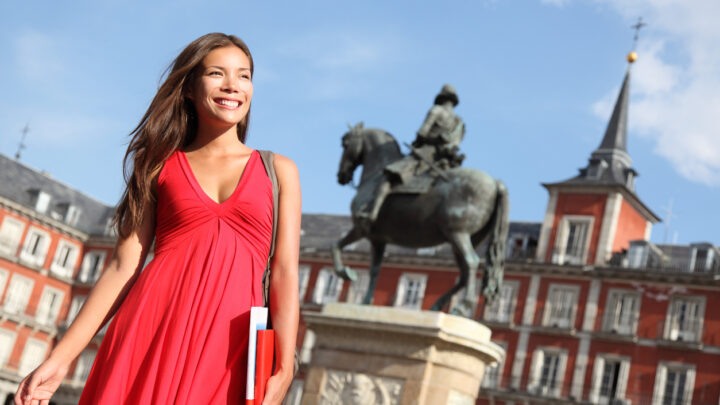
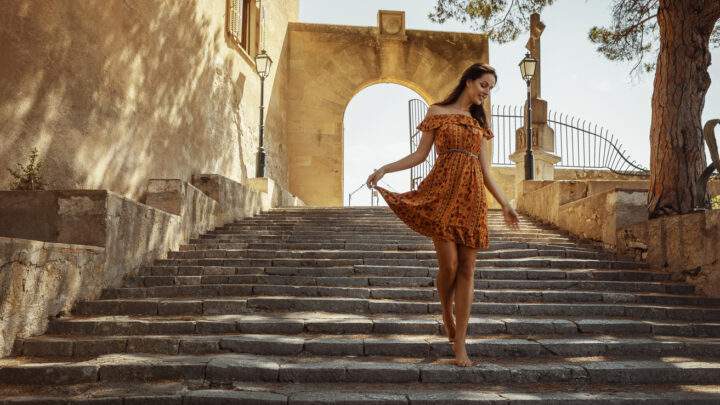





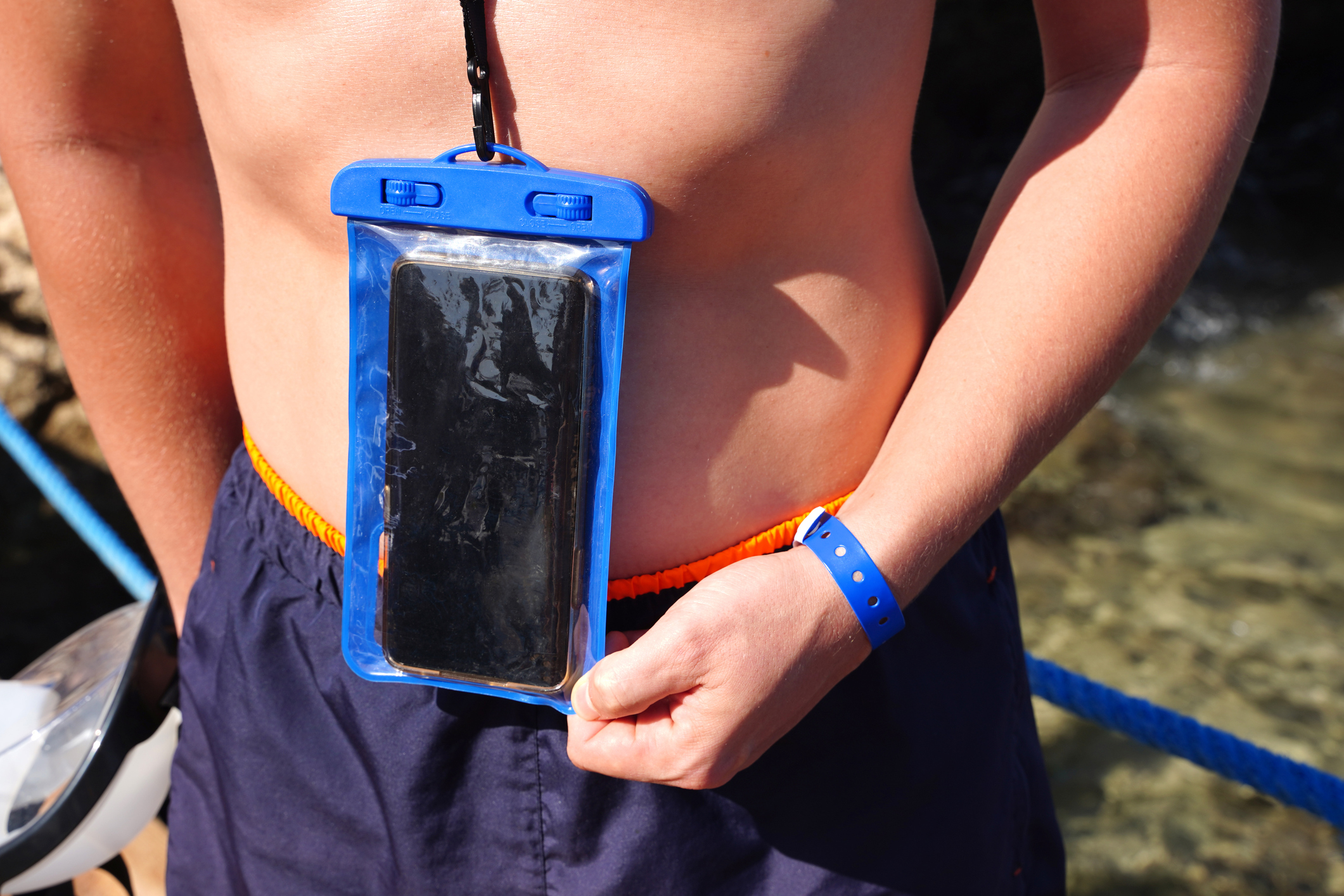
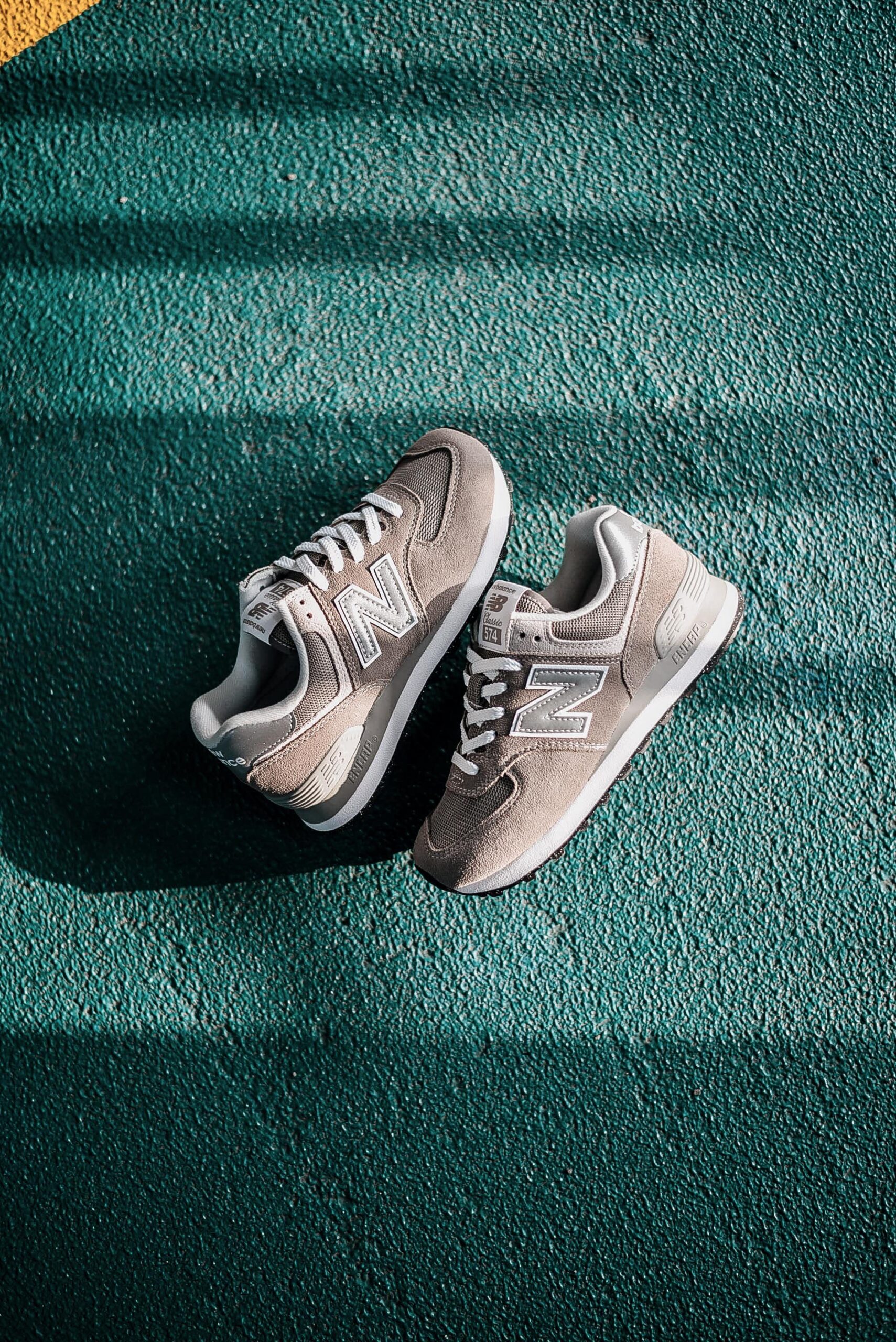
Comments Off on The Best Things to Do in Segovia Right Now